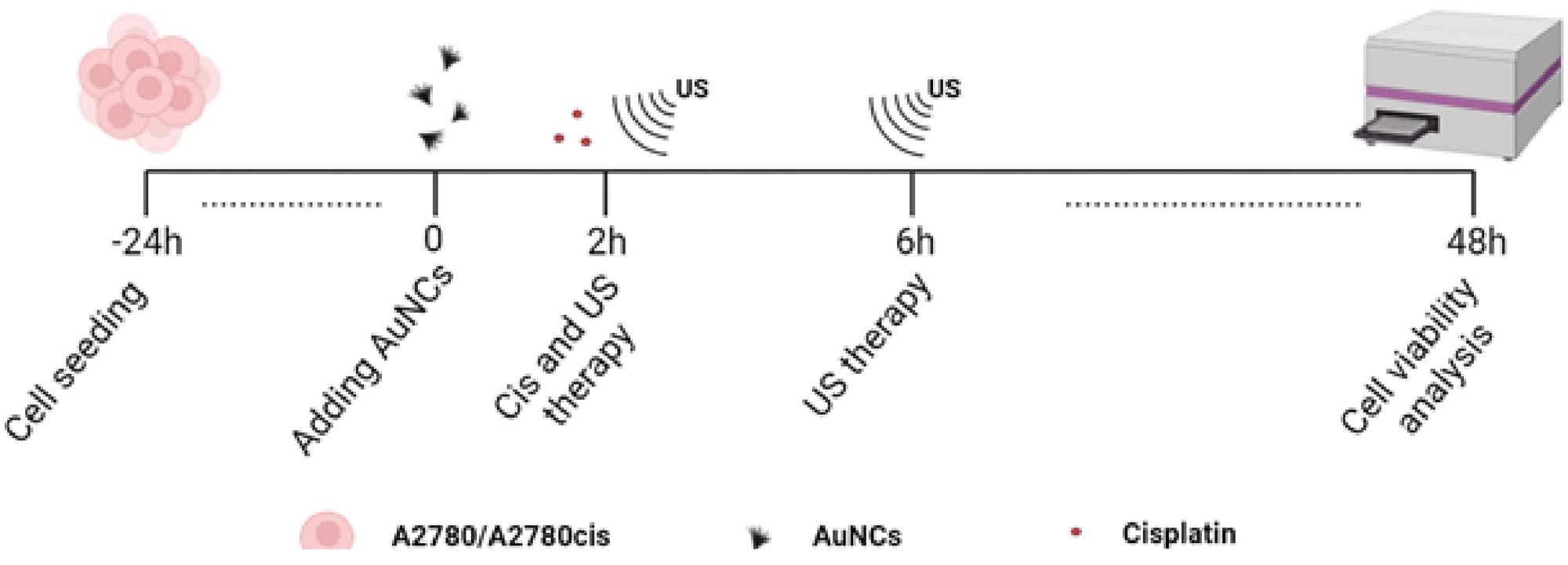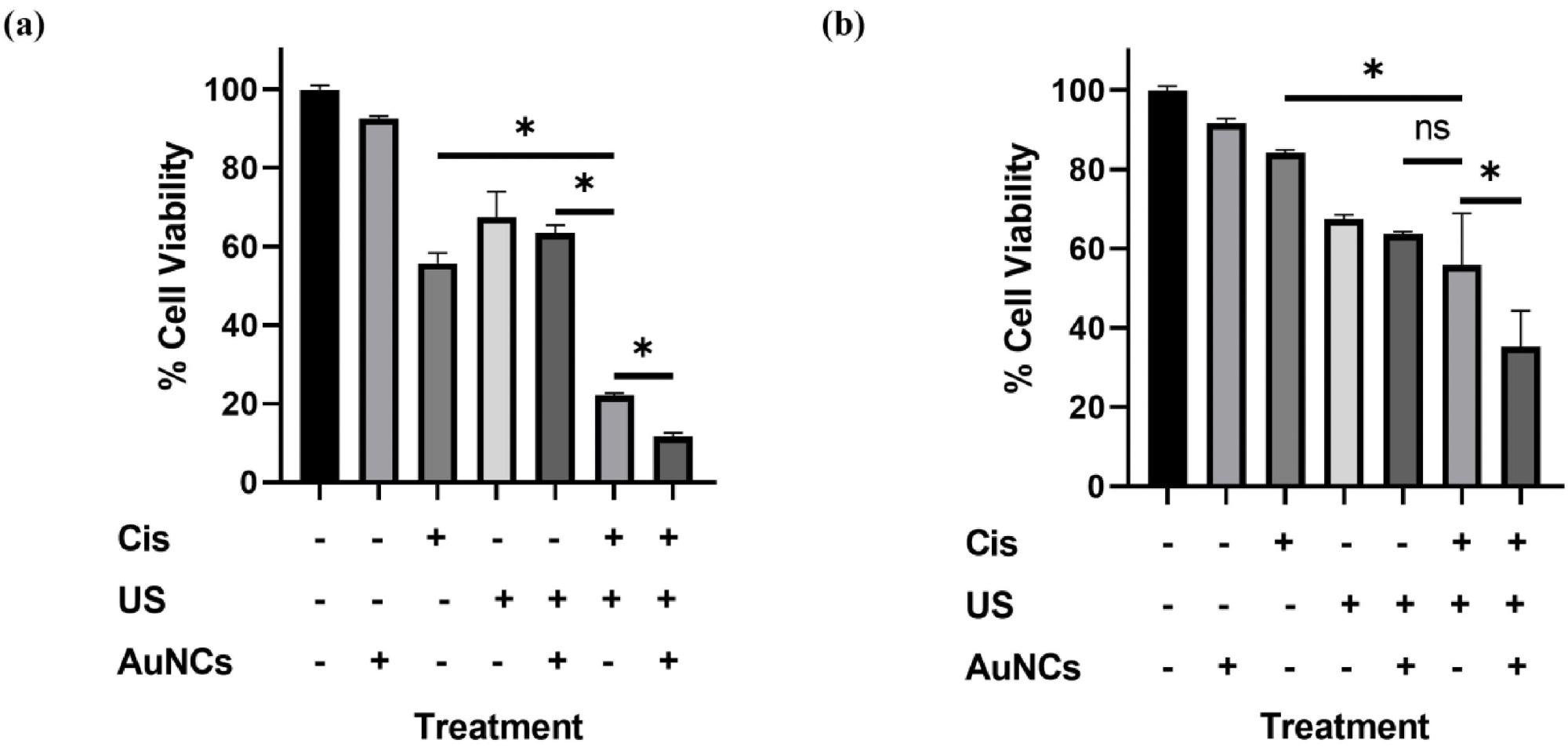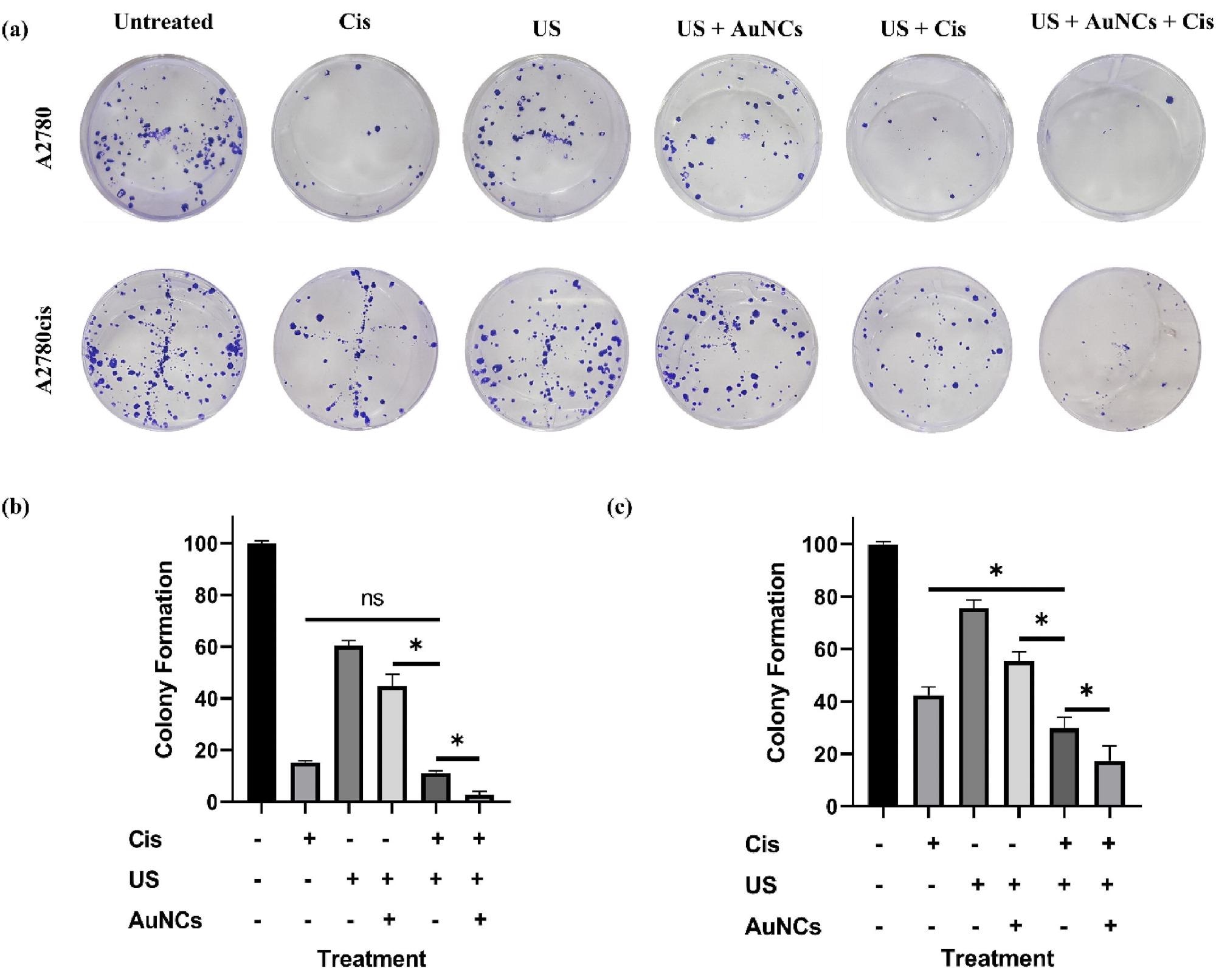Novel research investigating triple combination therapy against ovarian cancer has been undertaken and published in the journal, Ultrasonics Sonochemistry. This exciting research utilized ultrasonic waves (US), gold nanocones (AuNCs) and cisplatin (Cis) in order to overcome drug resistance, a significant developmental area for effective recurrent cancer treatment.

Study: Triple-Combination Therapy Assisted with Ultrasound-Active Gold Nanoparticles and Ultrasound Therapy Against 3D Cisplatin-Resistant Ovarian Cancer Model. Image Credit: mi_viri/Shutterstock.com
Cancer Therapy Drug Resistance
Drug resistance within cancer therapy is a critical issue affecting the efficacy of treatments. To overcome this limitation, combination therapies have been investigated. This is especially significant in ovarian cancer as the probability of recurrence is higher because of late diagnoses due to symptoms being overlooked. Additionally, recurrent cancer may require a different type of chemotherapy if the first utilized a platinum-based chemotherapy treatment due to the tumor being deemed ‘platinum-resistant’.

Timeline of study. 40,000 A2780/A2780cis cells were separately seeded in each well. 2 h after the addition of 100 µm/mL AuNCs;4.3 µM Cis and US therapy were applied. After 6 h, US therapy was applied again, and after 48 h of incubation, cell viability analyzes were performed. © Kip, B., Tunc, C. and Aydin, O., (2021)
Chemotherapy, a significant method of eradicating tumors and cancerous cells from patients through the use of toxic drugs, is a conventional treatment method that has since started to undergo advanced developments. While beneficial, chemotherapy drugs can have many side effects, such as systemic effects that can affect the whole body, including healthy non-cancerous tissue, leaving patients with conditions such as organ failure.
Another limitation of chemotherapy drugs is the development of chemo-resistant pathways – this issue is critical as it can be a major factor in mortality in recurrent ovarian cancer.
The limitations of conventional drug treatments for cancer have led to innovative developments such as research into chemo-resistant cells and having more specific therapeutic targets. Additionally, combination cancer therapies have garnered popularity over recent years to overcome the resistance of cancer cells to certain drugs that have enhanced efficacy by sensitizing cells to novel combinations as opposed to single treatments.
Ultrasound therapy (US) has already been established in the literature to show efficacy in enhancing chemotherapy within preclinical trials, illustrating its promise as a potential approach for overcoming drug resistance. Its effects include increasing the porosity of the cell membrane, being non-invasive, having no systemic toxicity, and high tissue penetration. These benefits can be seen as more effective than other clinical treatments such as photothermal and radiation therapy.
Additionally, research has found the use of US with chemotherapy drugs can aid in accumulating the drug in the cancer site, combatting resistance mechanisms with lower concentrations and shorter treatment duration being considered the most effective strategy.

Effect of Cis, US, US+AuNCs, US + Cis, and US+AuNCs+Cis treatments on cell viability in A2780/A2780cis ovarian cancer cell lines. A2780 (a) and A2780cis (b) ovarian cancer cells were treated separately with Cis, US, US+AuNCs, US + Cis, and US+AuNCs+Cis combination therapy, and cell viability was analyzed with resazurin 2 days after treatments. (*p-values<0.05) © Kip, B., Tunc, C. and Aydin, O., (2021)
Innovative Triple-Combination Therapy
The researchers of this innovative study have utilized gold nanocones (AuNCs) as ultrasound agents to increase the efficiency of acoustic energy from US therapy. The team assessed the effect of nanoparticle-assisted and ultrasound therapy-mediated low-dose chemotherapy utilizing cisplatin in order to combat drug resistance on two-dimensional and three-dimensional drug resistant ovarian cancer cell models.
Gold nanocones are considered to be a useful ultrasound agent with previous research illustrating their ultra-sound active characteristic as well as their enhanced penetration in vitro with the presence of ultrasound energy.
The innovative research utilized this triple combination therapy of ultrasound energy, gold nanocones, and chemotherapy drug, cisplatin, and found promising results, with 60% of drug-resistant cells and 83% of colony formation being suppressed.
The cell membrane porosity was enhanced with the use of US and AuNCs and this overall increased the concentration of cisplatin accumulation within cells – ultimately reducing the resistance of cisplatin drug resistance in cancer cells through a low-dose concentration.
Significance for Future Therapies
The potentiality of this triple-combination therapy is monumental for the advancement of cancer therapeutics with significant implications which could solve the crisis of drug resistance. Additionally, it can also reduce the adverse side effects usually experienced with conventional high-dose drug concentrations in order to eradicate cancer cells.
The selectivity of AuNCs and the uptake into tumor areas are a significant benefit that can reduce its toxicity on healthy tissue and organs, increasing the care of patients and enhancing their quality of life.
This novel study, which has utilizing gold nanocones has illustrated its utility in increasing the efficacy of ultrasound therapy as well as overcoming drug resistance at low-dose drug concentrations.
This strategy could be revolutionary for recurrent ovarian cancer as approximately 70% of ovarian cancer patients experience recurrence, with the risk of recurrence increasing the later it is diagnosed. Additionally, with this type of cancer being referred to as a ‘silent killer’ due to most symptoms being overlooked until the disease is in an advanced stage.
Innovative and effective treatments such as a triple combination therapy are necessary and could help reduce ovarian cancer recurrence rates, providing good prognoses.
While this research is limited due to being in its infancy, its proof-of-concept experimentations with a triple combination therapy utilizing gold nanocones may be revolutionary. The results of this study illustrated its potentiality for further experimentation, including in vivo investigation as a promising cancer therapy that can target drug-resistant ovarian cancer – a concept that can also be used for other drug-resistant cancerous cells.

Colony formation assay using A2780/A2780cis was performed as described in the experimental procedure (a). Bar graph of colony formation assay results of A2780 (b) andA2780cis (c) by counting the number of colonies containing over 50 cells. (*p-values<0.05) © Kip, B., Tunc, C. and Aydin, O., (2021)
Reference
Kip, B., Tunc, C. and Aydin, O., (2021) Triple-Combination Therapy Assisted with Ultrasound-Active Gold Nanoparticles and Ultrasound Therapy Against 3D Cisplatin-Resistant Ovarian Cancer Model. Ultrasonics Sonochemistry, p.105903. Available at: https://doi.org/10.1016/j.ultsonch.2021.105903
Further Reading
Chandra, S., Johnson, A., Shetty, M., Cepela, J., Talukdar, S., Mattson, J., Macchietto, M., Henzler, C., Mullany, S., Nelson, A., Wang, J., Winterhoff, B. and Starr, T., (2021) Chemotherapy resistance pathways identified by single cell RNA sequencing. Gynecologic Oncology, 162, p.S109. Available at: https://doi.org/10.1016/S0090-8258(21)00849-0
Healthline. (2021) Ovarian Cancer Recurrence: Rates, By Stage, and More. [online] Available at: https://www.healthline.com/health/ovarian-cancer/recurrence#treatment
Zheng, H., (2017) The molecular mechanisms of chemoresistance in cancers. Oncotarget, 8(35), pp.59950-59964. Available at: https://doi.org/10.18632/oncotarget.19048
Disclaimer: The views expressed here are those of the author expressed in their private capacity and do not necessarily represent the views of AZoM.com Limited T/A AZoNetwork the owner and operator of this website. This disclaimer forms part of the Terms and conditions of use of this website.